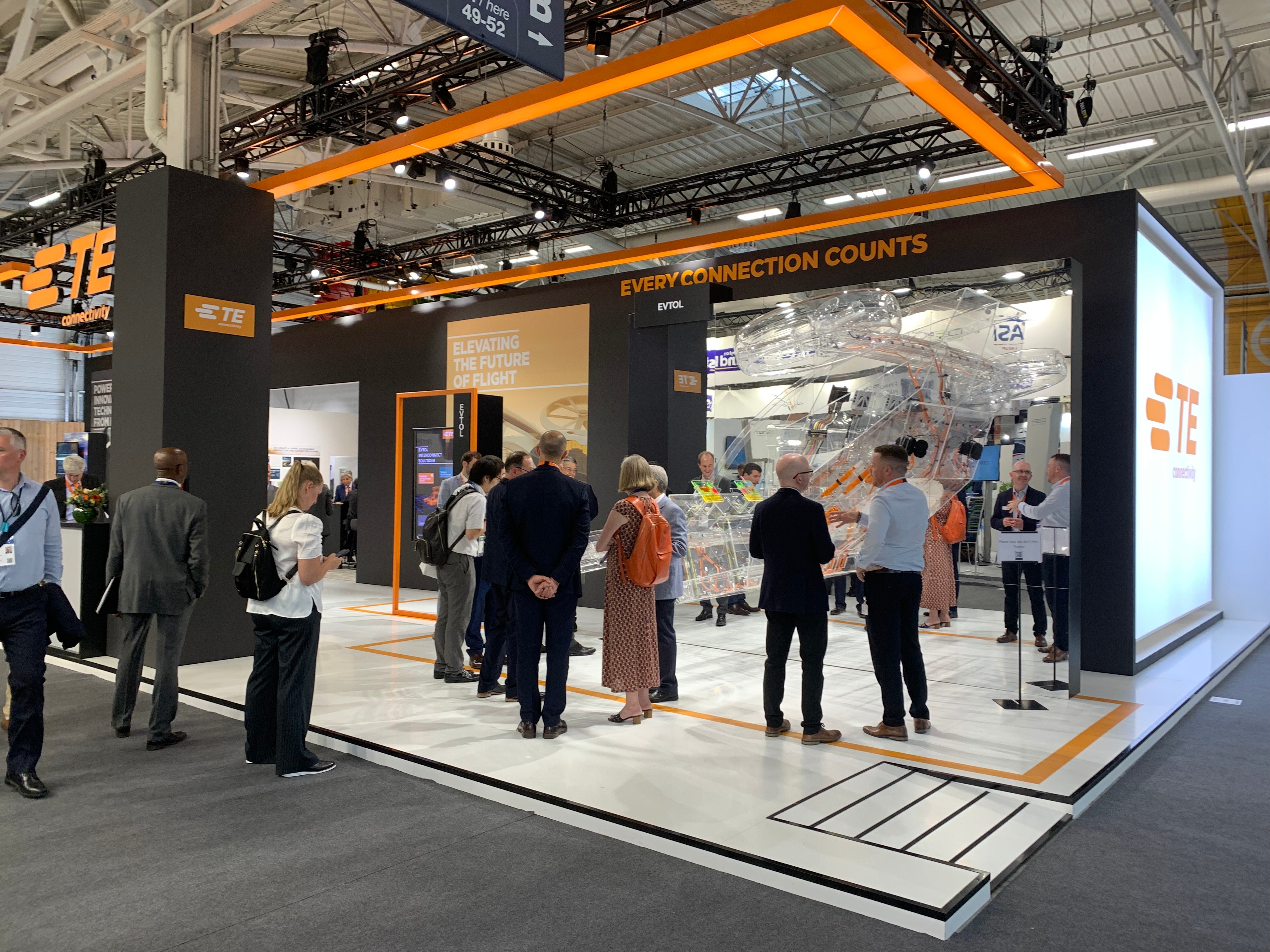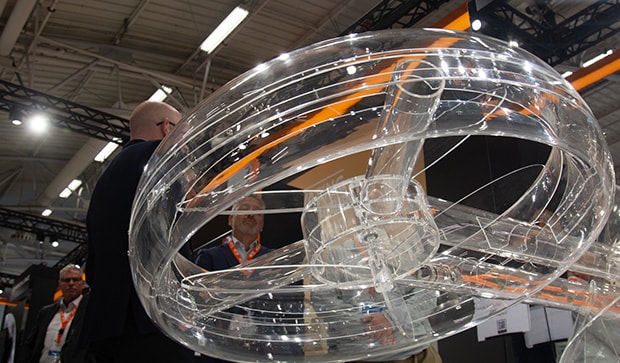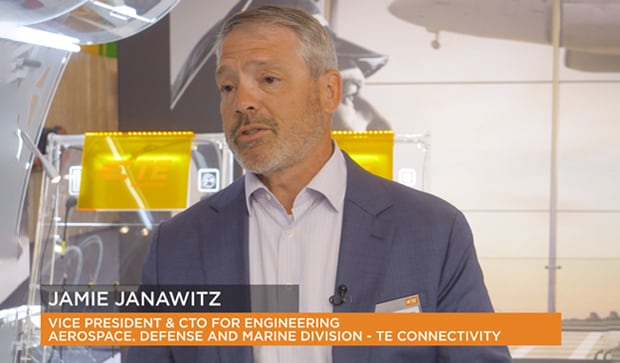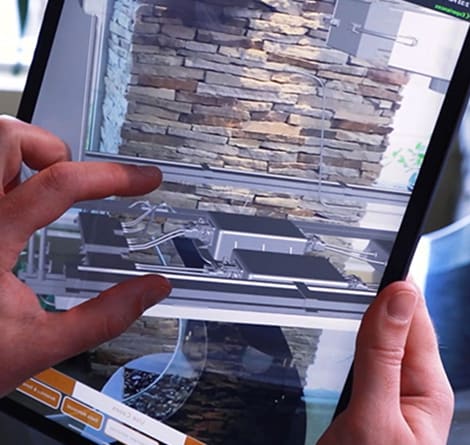
Trend Insight
TE’s Top Trends from the 2023 Paris Air Show
Review the trends that dominated the 2023 Paris Air Show, including decarbonization, hybrid aircraft, eVTOL, eCTOL, hypersonic missiles, and emerging markets.
Contributors:
- Martin Cullen, Senior, Business Development Manager, Global eVTOL Lead
- Oleg Tkachenko, Senior Director, Strategy and Business Development
- Claudia Wiedmann, Manager, Integrated Marketing
Paris Air Show 2023 Highlights
TE’s Top Trends from the 2023 Paris Air Show
The Paris Air Show is the world’s largest exhibition dedicated to the aerospace sector. The biennial event showcases the latest technological innovations and previews the future of the aviation industry.
The 2023 Paris Air Show, held in Le Bourget, France, from June 19 – June 25, welcomed 2,500 exhibitors from 46 countries, including 300 startup companies, with more than 150 aircraft on display.

The TE Connectivity (TE) exhibit drew large crowds to its transparent mock-up of an electric vertical takeoff and landing (eVTOL) aircraft that highlighted the many TE connectors and assemblies used in this exciting new category of commercial aircraft.
Trends from Paris Air Show
Based on conversations with existing and future customers and an analysis of the demonstrations, announcements, and exhibits, the TE team saw several trends rise to the forefront of the Paris Air Show experience:
- Sustainability and decarbonization initiatives in aviation
- Seeking alternatives to traditional power sources
- Electrifying existing aircraft through electric conventional takeoff and landing (eCTOL) approach
- eVTOL passenger applications move closer to reality
- Startup vendors are making a big impact with value innovation
- The rising importance of India’s aerospace market
- Hypersonic technology is accelerating innovation in the defense industry
1. Sustainability and Decarbonization Initiatives in Aviation
Decarbonization and sustainable aviation were major themes of the show and the subject of many presentations and discussions. In a rare joint message, the chief technology officers (CTO) of Airbus, Boeing, Dassault Aviation, GE Aerospace, Pratt & Whitney, Rolls-Royce, and Safran issued a statement on the importance of accelerating a shift to sustainable aviation fuel (SAF) to meet the industry’s goal of net-zero carbon emissions for civil aviation by 2050.
This enthusiasm to transform all parts of the aviation ecosystem extended far beyond the industry’s seven largest manufacturers. Exhibitors large and small from around the world, including TE, shared their insight, capabilities, and solutions to help begin meeting these challenges.
2. Seeking Alternatives to Traditional Power Sources
In sync with the air show’s theme of sustainability, many of the exhibitors displayed a range of alternative power concepts that could enable the industry’s goal to reduce emissions.
Hybrid systems offer a great deal of design flexibility. Just a few of the many options include conventional gas turbines that are supplemented by electric motors or aircraft propelled by electric motors that rely on an internal combustion engine to generate power to keep the aircraft’s batteries charged.
Electric motors are very good at delivering power; however, their use is limited by the capacity of today’s battery technology. While fully electric aircraft are primarily in the conceptual stage for now, electric motors are more frequently being used for high-powered takeoff and landing applications, while traditional power sources are used during flight.
Hydrogen propulsion is a promising replacement for traditional diesel propulsion systems because hydrogen has a higher energy density than diesel fuel, meaning more energy can be stored in less space. Plus, it is produced from low-carbon sources and creates zero emissions. Switching from diesel to hydrogen will require a considerable redesign of an aircraft’s entire power and propulsion system, including the cryogenic tanks required to store the liquid hydrogen. Hydrogen-powered airliners are in the early stages of development and are expected to be in service by 2035.
3. Electrifying Existing Aircraft Through eCTOL Approach
It may be decades before the technology to electrify large airliners capable of carrying hundreds of passengers is available. In the meantime, there is intense focus on converting commercial aircraft that provide regional service to fewer passengers. Electric conventional takeoff and landing (eCTOL) refers to existing airframes that are electrified using 100% electrical power or a hybrid system.
Several eCTOL companies made their debut at the 2023 Paris Air Show. Their participation included demonstrations of new and emerging technology on electrical conversions of small aircraft.
eCTOL conversions target smaller craft with capacity for 4-10 passengers or regional planes that carry up to 40 passengers and have service routes of 300-700 miles. By modifying existing aircraft, manufacturers face fewer regulatory hurdles as compared to manufacturers that are developing entirely new platforms. As a result, eCTOL aircraft are expected to begin replacing conventional aircraft within the next five years. The push to electrify regional carriers is being driven by regulations that seek to reduce CO2 emissions. For example, a 2021 climate law in France prohibits air routes that use conventional aircraft if there is an existing rail link between the two cities. eCTOL aircraft may offer a more convenient travel option while still limiting carbon emissions.
4. eVTOL Passenger Applications Move Closer to Reality
Electric vertical takeoff and landing vehicles, known as eVTOL aircraft or “air taxis”, took center stage at the 2023 Paris Air Show as major manufacturers showcased their concepts and vehicles. A highlight was a series of demonstration flights of the VoloCity VC200 air taxi from Volocopter GmbH. Attendees were impressed and fascinated by these innovative, futuristic aircraft, especially in contrast to contemporary fighter jets or conventional passenger planes.
The huge presence of eVTOL technology at the show, including the spectacular eVTOL section, TE exhibit, demonstration from Volocopter, and tremendous amount of eVTOL-related technology and components on display, is a good indicator that the industry is moving closer to proving the safety and market viability of eVTOL passenger aircraft. The elements that go into determining market viability — safety, reliability, and quick passenger turnover times — all depend on flight-worthy, high-performance components.
The next few years will be an exciting time of trials and refinement of the eVTOL ecosystem as the first eVTOL aircraft become certified (anticipated in 2024). The first practical application of eVTOL passenger aircraft is expected to begin in Paris, France, for the Summer Olympics in June 2024.
In 2027-2028, the market is expected to expand to include more applications that will test and ultimately prove the viability of eVTOL services within select cities and regions around the world. As consumer demand grows, this evolving eVTOL ecosystem will require new mobility services and infrastructure such as vertiports and traffic management.
5. Startup Vendors Are Making a Big Impact with Value Innovation
In addition to the established aviation industry leaders, exhibitors at the 2023 Paris Air Show included about 300 smaller startup companies offering novel avionics systems as well as battery packs, electric motors, and the technology that will ultimately electrify the industry. Beyond offering innovative technological solutions with the potential to disrupt the market, these newcomers are helping to democratize the industry.
Aerospace components have traditionally been custom-designed for specific aircraft, which resulted in a huge mix of high-value, high-performance products produced in relatively small quantities.
Today, the focus is beginning to shift from custom solutions to value innovation, or providing more affordable solutions at scale that deliver the required level of safety and reliability for the application. The value innovation model used by many startups can benefit from collaboration with partners like TE that have experience meeting the performance and technology growth needs of aerospace, as well as the accessibility and build rates found in automotive or other industries.
6. The Rising Importance of India’s Aerospace Market
At most air shows, there is a big focus on orders for new aircraft.
This year, it was two multibillion-dollar orders from Indian airlines looking to
meet the anticipated demands of the world’s fastest-growing aviation market.
Indian carrier IndiGo kicked off the first day of the show with an order of 500 Airbus A320 aircraft — the largest single purchase agreement by any airline in commercial aviation history. On day two, Air India finalized an order of 470 planes from Airbus and Boeing, making it another historic order in the aviation industry.
7. Hypersonic Technology Is Accelerating Innovation in Defense
The defense segment featured prominently at the 2023 Paris Air Show with displays from major OEMs and military drone manufacturers, as well as a demonstration from the French army. However, it was hypersonic missile technology that proved to be a popular topic of discussion even without prototypes or technology on display at the show. Traveling at speeds of Mach 5 to Mach 10, hypersonic missiles can quickly change direction or attitude, which makes them extremely difficult to detect and intercept. Such speed also creates an intense high-temperature environment. Many of the electrical components used in military or space applications are tested at temperatures of 200°C to 300°C. However, assemblies for hypersonic missile systems typically must be able to withstand temperatures up to 1,000°C.
This combination of unprecedented speed and maneuverability also poses extreme challenges to the people who design, test, and develop hypersonic missiles and the systems used to detect and intercept these advanced missiles.
Ahead of Paris Air Show Trends
TE Is Ready for the Future of Aviation
The history of aviation has been marked by a series of step changes over the course of decades. The trends displayed at the Paris Air Show demonstrate that the future will be defined by immense change and unprecedented levels of innovation as new technologies emerge and mature, new markets are developed, and startups continue to disrupt the industry and reinvent the way things are done.
TE is uniquely positioned to provide the products and engineering solutions that meet today’s challenges as well as to target emerging trends to help prepare the industry for what’s next.
From the global market perspective, TE is already serving India’s booming aeronautic industry with two manufacturing facilities in Bangalore, producing connectors, harnessing assemblies, relays, cables, and cable assemblies. TE also has expert engineering and lab teams based in India, which are dedicated to designing and delivering innovative and reliable connectivity solutions. Finally, TE meets Make in India (MII) certification requirements for the defense industry that can also be applied to commercial aviation.
An extensive catalog of components that perform reliably in commercial, military, and aerospace applications is coupled with TE’s decades of experience developing and manufacturing electrical connectivity, battery management, and charging components for other industries with similar decarbonization goals and challenges.
This broad portfolio and extensive experience enables TE engineers to help designers, engineers, and manufacturers design the best connectivity solutions for emerging hybrid, hydrogen, eCTOL, and eVTOL aviation applications. Even at the earliest stages of technology development, TE has the capability to design, test, and manufacture connectors, cables, and assemblies to help meet the highest standards of safety, performance, and sustainability, and withstand extreme environments.







